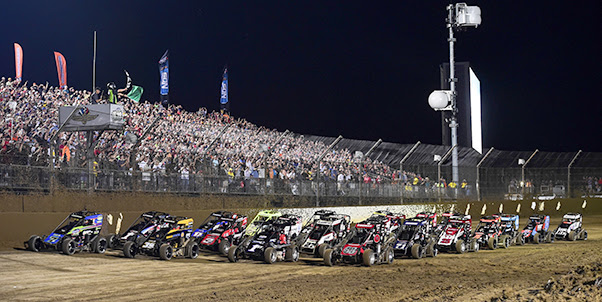Circuit de la Sarthe, the route of the 24 Hours of Le Mans, is a combination of a racing stadium capable of accommodating 100,000 spectators, along with public roads in and around Le Mans that are used by local residents most of the year.
During the race, teams often cover well over 5,000 kilometers (3,100 miles).
Professional drivers know the importance of good vision and attention to details. Even a momentary lapse in vision or focus can be the difference between a triumphant finish and a potentially disastrous outcome.
But the stakes are equally high for all of us. According to the World Health Organization (WHO), approximately 1.35 million people are killed each year on roadways around the world.
The 24 Hours of Le Mans is an exciting opportunity to watch professional drivers navigate Circuit de la Sarthe, but it also offers valuable lessons for everyday drivers about vision and driving safety.
Beginning your day
Professional drivers at Le Mans know they can’t drive their best if they are tired and drowsy. Neither can you.
A recent survey of adults in 12 countries found that 62% of adults admitted they sleep only somewhat well and 44% stated that their sleep has worsened in the past five years.
Also, according to the World Economic Forum, drowsiness has been a significant factor in roughly 100,000 car accidents every year, causing an estimated 1,500 deaths annually.
Being a safe driver begins with getting a good night’s sleep. Go to bed early enough to sleep eight hours if possible. And don’t get behind the wheel in the morning if you’re still drowsy.
Morning drive time
Before getting in your car in the morning, make sure your glasses, contacts, and/or sunglasses are clean and comfortable and you’re seeing well.
In the 24 Hours of Le Mans, about 60 cars share the road. Cars are often bumper-to-bumper during the race — and sometimes in hazardous conditions.
During your morning drive to work or school:
- Be aware of the cars, trucks, buses, motorcycles, bicycles and pedestrians you’re sharing the road with.
- Check your mirrors frequently.
- Anticipate — and be ready for — possible problems or sudden congestion.
- Pay attention to the road and avoid distractions (radio, coffee, others in the car, your phone).
- Never EVER text or read emails when driving.
Daytime driving
The drivers at Le Mans wear tinted visors on their helmets for good reason. Bright sunlight and changes in lighting conditions during the day can cause blinding glare that can be disastrous on the road.
Sunglasses are a must when driving in daylight — especially in full sun. Polarized sunglasses are especially good for reducing glare from road surfaces and the hood of your car.
Ask your eye care professional for advice on the best lens tints for driving — including tints for photochromic lenses that darken and lighten automatically depending on the light conditions around you.
Driving at dusk
Many people find driving at sunset can be visually challenging. The sun can shine directly into your eyes when it reaches the horizon and your eyes have to adapt to a decreasing amount of ambient light.
Driving at dusk can also be especially bothersome for older drivers, who are more prone to discomfort from glare due to aging changes in the eye (such as early cataracts).
A dirty or pitted windshield (one with natural wear and tear) can especially affect your vision at sunset, causing oncoming lights to scatter and reflect off the glass.
Make sure to routinely to check that:
- Your windshield is clean
- Your wiper blades are in good condition
- Your car’s windshield cleaning fluid dispenser is full
Wear sunglasses and use your car’s sun visor as needed to improve your line of sight, and turn on your headlights on the highway, before dark and when it rains to help other drivers see your vehicle.
Night driving
There’s no question that driving is more difficult and dangerous at night. According to the National Safety Council, we do only a fourth of our driving at night, but 50% of traffic deaths occur after dark.
Even small amounts of uncorrected nearsightedness, farsightedness or astigmatism can cause significant vision problems at night. Even if you can pass a driver’s vision screening without your corrective lenses, it’s a good idea to wear them whenever you drive, and especially at night.
If you wear prescription eyeglasses, be sure your lenses include anti-reflective coating for driving at night. Anti-reflective (AR) coatings eliminate light reflections from the surface of your glasses lenses.
The American Optometric Association offers these additional vision tips for safe driving at night:
- Don’t wear glasses with tinted lenses at night. All tinted lenses — including those marketed as “night driving glasses” — reduce visibility in darker nighttime driving conditions.
- Never look directly at an oncoming vehicle, regardless of the type of headlights it’s using. Staring at headlights can make it harder for you to recover your vision after the vehicle has passed.
- Clean your windshield (inside and out). A dirty windshield can cause glare and reduce visibility when driving at night or during the day.
- Keep your headlights clean. Also, replace headlight coverings if they become fogged due to prolonged sunlight exposure, which can reduce the brightness and range of your headlights at night.
- Make sure your car’s headlights are properly positioned, aimed and aligned for maximum visibility.
“Start your engine!”
Tomorrow, start your day by deciding to be a safer, more attentive driver.
The skills and endurance of Le Mans drivers are an inspiration, and not something to try at home. Weaving in and out of traffic at high speeds should be reserved for video games, race courses and your dreams — not on a standard roadway.
Instead, focus on being a champion of safe driving — in your neighborhood, during your daily commute and wherever your travels take you!







